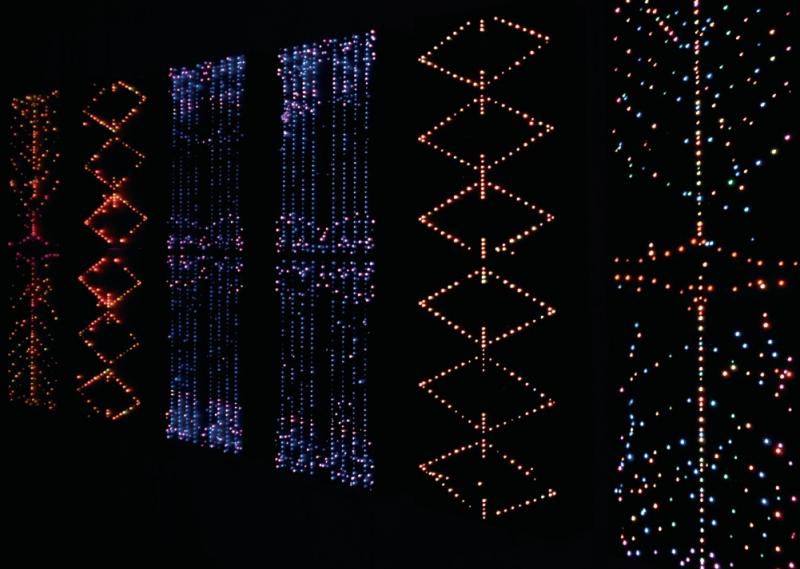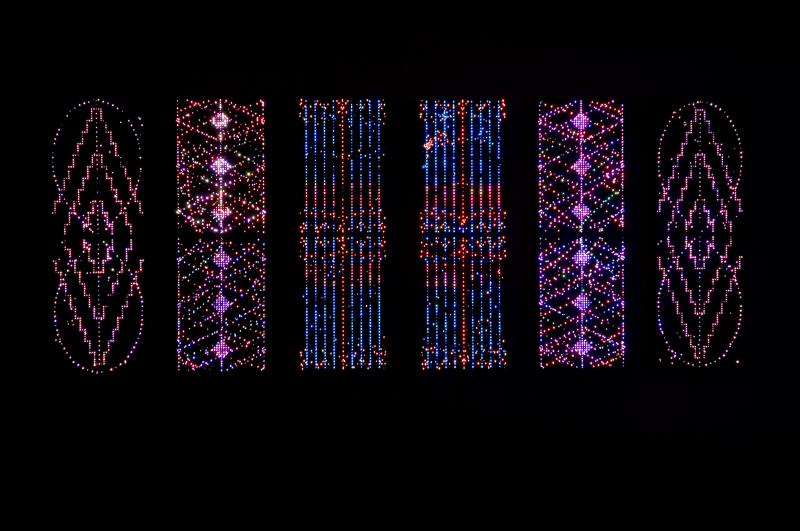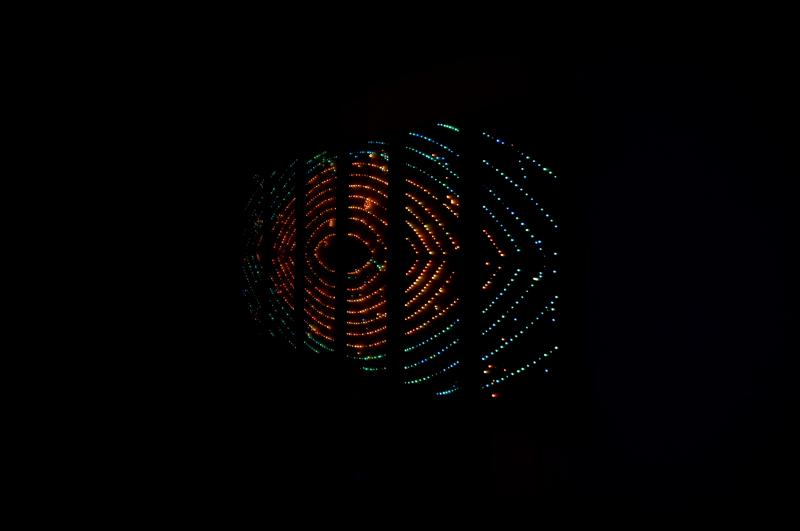Indigenous brands, Maori business, Kaupapa Growth and innovation, collaborative pilot projects, culture connection and exchange, design enabled economic, culturally enriched.

Muramura 2008
This project was an investigation into how Maori visual culture can continue to assert significant cultural knowledge, values, philosophies and aesthetics in our contemporary urban environments. The power to cultivate a sense of belonging, identity and agency within the world, that resonates for Maori, is a strong reason to pursue both artistic and design activities. This installation has shown in a number of galleries, including Pataka museum of art and culture, Puke Ariki : Takapou whariki and Te Manawa in Palmerston North.
Click on thumbnails to enlarge
Iwi:
Te Ati Awa
Nga Aho practitioner:
Kura Puke
Muramura 2008
Muramura.2008.
Acrylic, aluminium, LEDs (light emitting diodes), fibre-optic cables.
Mura - Blaze, flame. Mumura - 1) Glow, show a brilliant colour. 2) blush, redden. Muramura - Flash. (Williams,1971, p.214).
This work is a series of electronic tutkutuku panels, made from fibre optic cable, illuminated by software controlled LED lights. This installation Muramura comprises a series of 12 panels, within six cases. Each case houses two panels in ‘portrait’ format. These panels are reminiscent of tukutuku in shape, size and pattern configuration. A departure in customary appearance occurs in terms of materials and technology through the use of LED and optical fibre thread. The patterns are animated by illuminated fibre points through variable colour, timing and intensity using digital programming. These cases can sit together in a mural-like format, or can be variably arranged, spatially, to create alternative installation formats like tukutuku panels within a wharenui format or as individual pieces. Critically, the cases offer the potential for a multitude of installation configurations together with their associated notions, narratives and visual effects. This work has both artistic and commercial capabilities. As a mural configuration they can appear as sleek commercial signage, or can be adjusted through a wide spectrum to a very discreet and subtle effect, through hanging techniques and through the variable speed, colour and intensity options. For example, they may be set within a wharenui, with the patterns visible as a slow glimmer, or in a commercial site as a bright, animated billboard. Specifications: Dimension of each panel: 430 x630 x 150mm. Placed together the overall wall space these panels require is 2630mm wide x 1230mm height. Each panel has a primary pattern and a secondary pattern. An integrated third pattern conjoins all the panels in a unified elliptical design. When all panels are fully illuminated a map, of the significant Whanau marama within the southern skies, is revealed. These panels have the capacity to animate as a synchronised sequence to either run together as an integrated whole or the patterns can be reconfigured for different combinations of panel illumination.
My research is based on Matauranga Maori, particularly through the writings of Rev. Maori Marsden, and how that can continue to be communicated and remain as central to Maori identity. If 'cosmology' can be ordered within the model of a wharenui, then if buildings or spaces can be regarded as wharenui. These tukutuku, which can be both embedded within a space, or portable, acts as a symbol of this concept. Extending further, hwere there are Maori there should be Maori visual culture, whether thats Taranaki or Tokyo. To see visuals in your environment gives a sense of location, identity and belonging: where there are Maori there is wairua.


